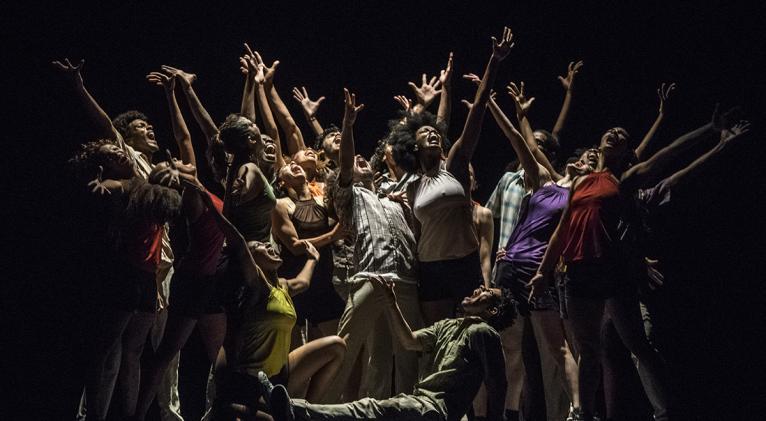Choreographic Marathon
especiales

The first days of the 28th edition of the Alicia Alonso International Ballet Festival have allowed the public to enjoy a great variety of styles. This was the hallmark of the gala that took place on Tuesday at the Avellaneda hall of the National Theater: from academic ballet, through expressions of neoclassicism, to folk and contemporary dance. This is the event goal, which aims to become a celebration of all dance.
End of Time, by Ben Stevenson, performed by Sadaise Arencibia and Bertho Rivero (National Ballet of Cuba), was a display of lyricism in the most refined neoclassical style of dance. The scenic dialogue between Arencibia's experience and Rivero's youthful energy was harmoniously accomplished. Rivero, at the dawn of his career, is already a promise for Cuban dance (strong stage presence, technical sufficiency, partner material... he just needs to polish his style), while Arencibia showed off her usual emotional commitment, which highlighted the timelessness and beauty of Stevenson's proposal.
In his interpretation of Ballet 101, by choreographer Eric Gauthier, Yankiel Vázquez took on with grace and freshness the humorous approach of the piece, which is a fun recreation of the daily challenges of ballet art. With skill and energy, Vázquez undertook the demanding movements of the choreography, earning the applause and laughter from the audience.
In Jeunehomme, by Uwe Scholz, Rachele Buriassi and Cuban Esnel Ramos, from Les Grands Ballets Canadiens, offered an interpretation marked by technical and stylistic clarity as well as an emotional commitment that sustained the expressive implications of a particularly intense piece. In The Dying Swan, based on Fokine's famous choreography, Elena Vostrotina (Zurich Ballet) met the technical and stylistic demands of the show, accompanied by an inspired live interpretation of Saint-Saëns' music by Cuban pianist Daniela Rivero and Russian cellist Nikolay Shugaev.
The brilliance and elegance of French ballet were evident in José Martínez's Delibes Suite, a vibrant pas de deux danced by Mathilde Froustey and Riku Ota (Bordeaux Ballet), who honored, with complete stage mastery, the fine sense of humor of this homage to the great classical tradition.
We will dedicate a separate comment to the proposal of the Jewish Dance Company in Mexico, Anajnu Veatem. At this gala, they infected the audience with their joy with Un poco de nosotros, conceived, with a spirit of integration of various traditions, by Guillermo Treistman.
There was also room for the most exalted Balanchine, with the staging of the pas de deux from Diamonds, by Emely Bromberg (United States) and Rainer Krenstetter (Austria), precise and attentive to the demanding choreographic structure of the piece, which also requires poise and distinction.
Irina Perren and Marat Shemiunov, from the Mikhailovsky Theatre in St. Petersburg, delivered the very essence of a classic of Russian ballet: the pas de deux Spring Waters, by Asaf Messerer. Strength, good taste, desire to dance... and a beauty in the lines that motivated the audience.
The pas de deux Le Parc, by Angelin Preljocaj, performed by Verety Jacobsen and Antoine Dubois from the Preljocaj Ballet, was an expression of profound drama, which reveals and recreates the emotional complexity of a couple's relationship. Preljocaj's poetry is characterized by a fusion between classical ballet and contemporary dance, which allows him to explore universal themes with a unique symbolic intensity, detailed gestures and meticulous composition.
And speaking of human relationships, Juliano Nunes explores the bond between two men in Interlinked, danced by Brandon Lawrence, from the Zurich Ballet, and Tzu-Chao Chou, from the Birmingham Royal Ballet. There is an interesting and innovative approach here to themes such as gender identity, self-perception and the interconnection between people, which is supported by Nunes' ability to fuse athletic and, at the same time, lyrical movements. The rapport of the performers and the plasticity of the framework round out the proposal.
And to make the night better, a piece that has marked the panorama of Cuban dance like few others in recent years, Mambo 3XXI, by George Céspedes, which Danza Contemporánea de Cuba performed with all the enthusiasm in the world.
Translated by Sergio A. Paneque Díaz / CubaSí Translation Staff














Add new comment